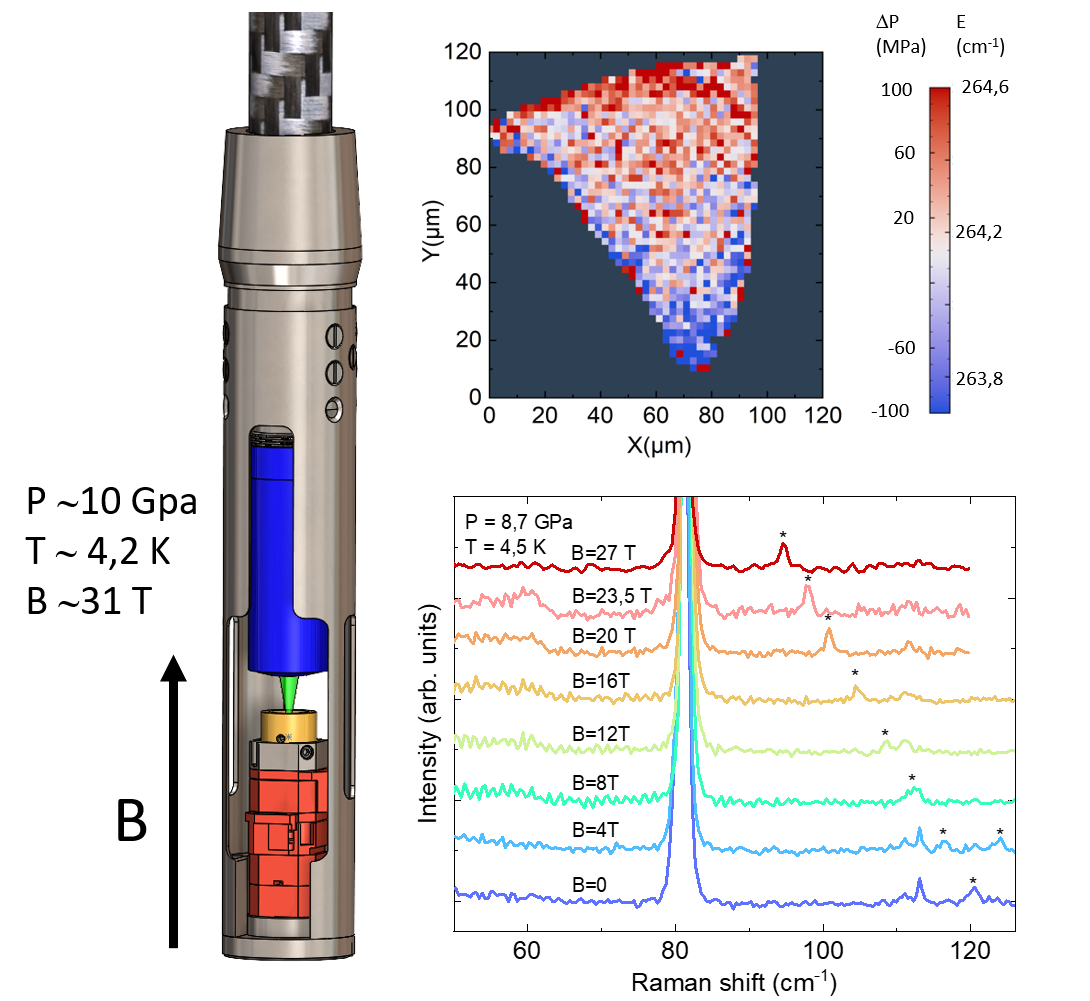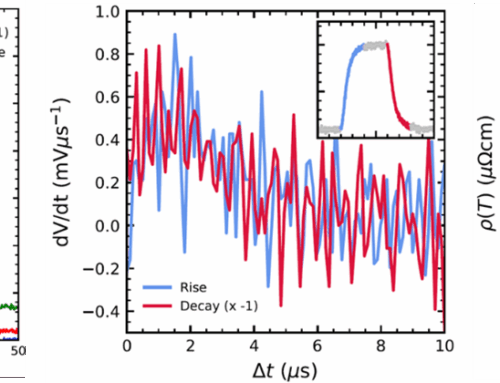Ivan Breslavetz and Clément Faugeras, LNCMI Grenoble.
To flesh out the phase diagrams of novel material systems, researchers must examine these materials under extreme conditions. We have designed an experimental setup for optical spectroscopy that simultaneously offers three extremes: low temperature, a strong magnetic field, and high pressure imposed by using a diamond anvil cell. The setup provides these extreme conditions while maintaining micrometer scale spatial resolution for optical spectroscopy, which can be used to study exotic phases of microstructures. We now have a powerful tool to investigate the electronic and magnetic properties of solids at hand, working in combined extreme conditions necessary for studying the occurrence of certain classes of exotic electronic phases. From its unique perspective, optical spectroscopy can shed special light on such electronic phases. We have recently performed the first experiments in such environments with bulk layered iron phosphorus trisulfide. The results presented in the figure show that this setup permits independent tuning of the three thermodynamic parameters. Consequently, this setup can be used to investigate phase diagrams for different systems and probe their properties with optical spectroscopy. Thanks to the spatial resolution, tiny structures or specific locations on large samples can be investigated by optical spectroscopy (Raman scattering, photoluminescence, reflectivity). This setup will be particularly useful in the field of layered materials for which pressure allows for a tuning of the interlayer distance and the related interaction effects.

Figure: (Left) Schematic drawing of the optical probe including an optical objective (blue), a diamond anvil cell (orange), and piezo positioners (red). (Top right) spatial map of the Raman-scattering response of FePS3 pressurized at 0.9 GPa. (Bottom right) Ramanscattering response of bulk FePS3 at P = 8.7 GPa, including the magnon excitation, indicated by a star in the spectra, for different values of the magnetic field.
Spatially resolved optical spectroscopy in extreme environment of low temperature, high magnetic fields and high pressure, I. Breslavetz, A. Delhomme, T. Pelini, A. Pawbake, D. Vaclavkova, M. Orlita, M. Potemski, M.-A. Measson, and C. Faugeras,
Rev. Sci. Instrum. 92, 123909 (2021).
https://aip.scitation.org/doi/full/10.1063/5.0070934
Contact: ivan.breslavetz@lncmi.cnrs.fr, clement.faugeras@lncmi.cnrs.fr






